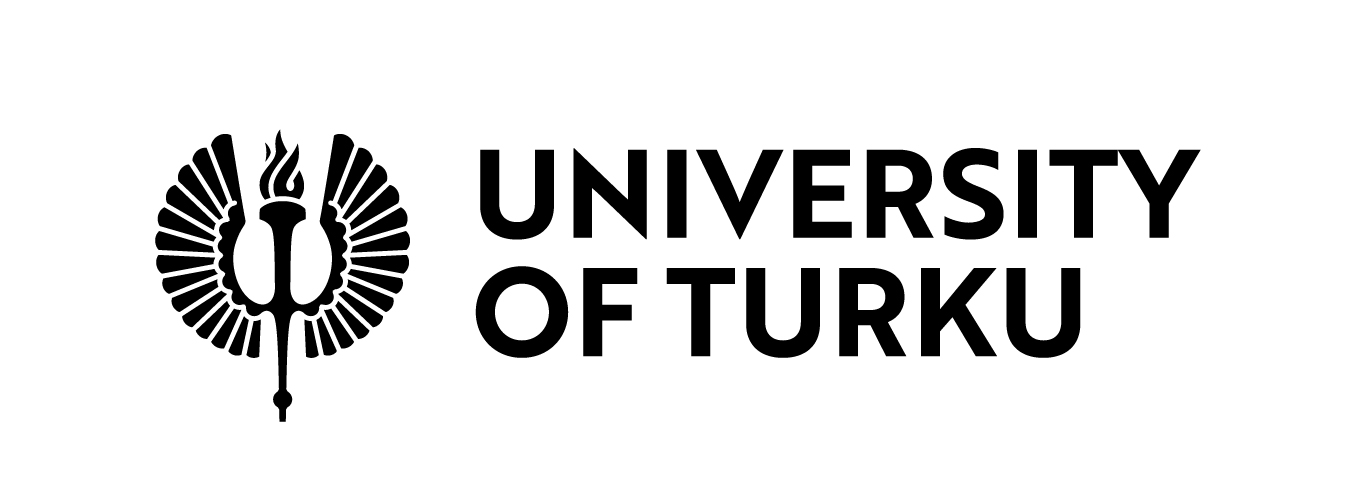Following fields are empty!
Journal of Legal Affairs and Dispute Resolution in Engineering and Construction
Journal of Location Based Services
The aim of this interdisciplinary and international journal is to provide a forum for the exchange of original ideas, techniques, designs and experiences in the rapidly growing field of location based services on networked mobile devices. TheJournal of Location Based Services is intended to interest those who design, implement and deliver location based services in a wide range of contexts. Published research will span the field from location based computing and next-generation interfaces through telecom location architectures to business models and the social implications of this technology. The diversity of content echoes the extended nature of the chain of players required to make location based services a reality. Hence the journal's aim is to bridge the research undertaken in industry and academia and promote communication amongst all in this diverse and rapidly growing sector.All published research articles in the Journal of Location Based Services have undergone rigorous peer review, based on initial editor screening and anonymous refereeing by independent expert referees.DisclaimerTaylor & Francis makes every effort to ensure the accuracy of all the information (the 8220;Content8221;) contained in its publications. However, Taylor & Francis and its agents and licensors make no representations or warranties whatsoever as to the accuracy, completeness or suitability for any purpose of the Content and disclaim all such representations and warranties whether express or implied to the maximum extent permitted by law. Any views expressed in this publication are the views of the authors and are not the views of Taylor & Francis.
Journal of Long-Term Effects of Medical Implants
MEDICAL IMPLANTS are being used in every organ of the human body. Ideally, medical implants must have biomechanical properties comparable to those of autogenous tissues without any adverse effects. In each anatomic site, studies of the long-term effects of medical implants must be undertaken to determine accurately the safety and performance of the implants. Today, implant surgery has become an interdisciplinary undertaking involving a number of skilled and gifted specialists. For example, successful cochlear implants will involve audiologists, audiological physicians, speech and language therapists, otolaryngologists, nurses, neuro-otologists, teachers of the deaf, hearing therapists, cochlear implant manufacturers, and others involved with hearing-impaired and deaf individuals. A similar list of specialists can be identified for each implant site, from dentistry to cardiovascular surgery. Consequently, scholarly work from all disciplines involved in implants is welcome. Realizing the interdisciplinary components of successful implant programs, we have considerably expanded the number of members of the Editorial Board. These gifted scholars are recognized as leaders in the field of implants. Each member has been listed with careful identification of academic title, institution, and mailing addresses. Because the ultimate success of implants depends on daily interactive communication, the email addresses of each Editorial Board member has been listed. During the next year, we will announce the names of 35 distinguished scholars from across the world who will be joining our Editorial Board. This new scholarly team will provide conceptual scientific information on implants that will further strengthen the exciting scientific information in this journal. The ability to predict the long-term in vivo performance of medical implants is of vital interest. The extrapolation of in vitro data to the in vivo environment remains largely unproven. Among the major challenges are our limited ability to simulate the complexities of the biological milieu; the current lack of reliable computer modeling of in vivo performance characteristics of implants; and difficulties in evaluating the synergistic contributions of materials, design features, and therapeutic drug regimens. The aims of the Journal of Long-Term Effects of Medical Implants are a better understanding of the mechanisms of failure of preclinically tested medical implants during long-term in vivo service life, both in appropriate animal models and in humans; and establishing an effective linkage between preclinical and clinical studies. Of particular interest are original, critical analyses of data of retrieved implants, interpretive discussions of data based on invasive and noninvasive procedures, and computer modeling of in vivo performance. Also of interest are articles on healthcare technology assessment involving implants and their social impact and economic consequences. The journal will also publish guest editorials, letters to the Editor, and book reviews. All articles are subject to peer review by at least two referees.
Journal of Loss Prevention in the Process Industries
Loss Prevention is concerned with process and plant design; plant layout; hazard analysis, accident and loss; plant commissioning and inspection; plant operation; maintenance and modification; process control and monitoring; design of protective systems; equipment design and reliability; use of computer systems in loss prevention; operational management and training aspects; accident analysis; emergency planning; transport and offshore; hazards assessment.Benefits to authorsWe also provide many author benefits, such as free PDFs, a liberal copyright policy, special discounts on Elsevier publications and much more. Please click here for more information on our author services.Please see our Guide for Authors for information on article submission. If you require any further information or help, please visit our support pages: http://support.elsevier.com
Journal of Low Frequency Noise, Vibration and Active Control
Journal of Low Power Electronics and Applications (ISSN 2079-9268) is an open access journal which provides an advanced forum for the studies of electronics for low power applications. A special emphasize is made on ultralow power bio-medical applications. It publishes reviews, regular research papers and short communications. Our aim is to encourage scientists to publish their experimental and theoretical results in as much detail as possible. There is no restriction on the length of the papers. The full experimental details must be provided so that the results can be reproduced.
Journal of Machine Learning Research
If you have not visited this site since January 1, 2006.
Journal of Machinery Manufacture and Reliability
The journal is devoted to advances in machine design: CAD/CAM: experimental mechanics of machines, machine life expectancy, and reliability studies: machine dynamics and kinematics: vibration, acoustics, and stress/strain: wear resistance engineering: real-time machine operation diagnostics: robotic systems: new materials and manufacturing processes, etc.
Journal of Magnesium and Alloys
Journal of Magnetics
Journal of Management in Engineering
Journal of Manufacturing Processes
Manufacturing is undergoing major transformation due to the unforeseen challenges arising from the current trend of miniaturization, the emergence of new materials and the growing interaction between biologists and engineers to learn more from nature and living objects.Traditionally, a "top-down" approach has been used in manufacturing. Recently, engineers and scientists have begun exploring "bottom-up" approaches for manufacturing today's highly complex products. Further, these emerging processes are aimed to improve process efficiency and product quality.The aim of the Journal of Manufacturing Processes (JMP) is to exchange current and future directions of manufacturing processes research, development and implementation, and to publish archival scholarly literature with a view to advancing state-of-the-art manufacturing processes and encouraging innovation for developing new and efficient processes. The journal will also publish from other research communities for rapid communication of innovative new concepts. Special-topic issues on emerging technologies and invited papers will also be published.Papers relevant to the scope of JMP include, but are not limited to, the following areas:• Meso/micro/nano fabrication, including imprint lithography.• Advanced manufacturing processes, including mechanical, chemical and thermal processes.• Welding, joining and assembly at micro and macro scales.• Rapid prototyping, rapid manufacturing and repair, stereolithography and other 3-D fabrication techniques that can use optical projection.• Advanced embossing, casting, forming and molding processes at all scales.• Mono/multilayer functional coating processes.• Continuum and subcontinuum process modeling and simulation.• Manufacturing process monitoring, control and automation.• Tribology and wear issues relevant to manufacturing processes.Benefits to authorsWe also provide many author benefits, such as free PDFs, a liberal copyright policy, special discounts on Elsevier publications and much more. Please click here for more information on our author services.Please see our Guide for Authors for information on article submission. If you require any further information or help, please visit our support pages: http://support.elsevier.com
Journal of Manufacturing Science and Engineering
The Journal of Manufacturing Science and Engineering serves as a vehicle for the rapid dissemination of original theoretical and applied research results of permanent interest in all branches of manufacturing. The majority of the papers published are peer-reviewed full-length articles of considerable depth. The Journal also publishes technical briefs, design innovation papers, reviews, discussions of published papers with rebuttal, book reviews, and editorials.
Journal of Manufacturing Systems
The Journal of Manufacturing Systems (JMSY) publishes state-of-the-art fundamental and applied research in manufacturing at the systems level. Manufacturing systems are comprised of products, equipment, people, information, control and support functions for the economical and competitive development, production, delivery and total life cycle of products to satisfy market and societal needs.Pertinent to the journal is work studying emerging manufacturing systems from the equipment level to distributed enterprises, and production challenges within and across various scales, including nano, micro and macro-scale manufacturing. Papers relevant to the scope of JMSY include, but are not limited to, the following areas:• Manufacturing Strategy and Paradigms: flexible, reconfigurable and changeable manufacturing systems; rapid manufacturing, lean manufacturing, virtual enterprises.• Manufacturing Systems Design and Operations: process planning, production planning and controls, modeling, simulation, virtual manufacturing.• Sustainable Manufacturing: life cycle of products and systems, sustainable manufacturing, design for environments and sustainability.• Quality Management: product and process quality, quality function deployment, quality by design, six sigma.• Automation, Control Systems, Human-Machine Interaction: agent-based systems, distributed and integrated control systems, intelligent systems, emergent systems, reconfigurable control, robotics, collaborative robots and human-machine interactions.• Product Development: product families, reverse engineering concept development, product design and integration with manufacturing systems, product life cycle.• Supply Chain Management and Logistics: global supply chains, dynamic supply chains, modeling and optimization.• Manufacturing Information Systems: Internet, Web-based systems, ERP (enterprise resource planning), automatic data capture, enterprise modeling.• Micro and Nano Manufacturing Systems: systems issues related to microfluidics, nanoelectronics, nano systems, microelectromechanical systems (MEMS), nanomaterials, interconnects (nano to meso to macro); energy, chemical and biological devices.Papers focused on novel manufacturing systems design, planning, modeling and control from the factory level to the extended enterprise and addressing the new global challenges are invited for the Journal of Manufacturing Systems. Papers addressing new and emerging related topics are also encouraged.
Journal of Manufacturing Technology Management
Publishing a broad coverage of original research relating to the management of manufacturing technology and combining theory with practical application.
Journal of Manufacturing Technology Research
Journal of Marine Engineering & Technology
• Fuel technology and Combustion
• Power and Propulsion Systems
• Noise and vibration
• Offshore and Underwater Technology
• Computing, IT and communication
• Pumping and Pipeline Engineering
• Safety and Environmental Assessment
• Electrical and Electronic Systems and Machines
• Vessel Manoeuvring and Stabilisation
• Tribology and Power Transmission
• Dynamic modelling, System Simulation and Control
• Heat Transfer, Energy Conversion and Use
• Renewable Energy and Sustainability
• Materials and Corrosion
• Heat Engine Development
• Green Shipping
• Hydrography
• Subsea Operations
• Cargo Handling and Containment
• Pollution Reduction
• Navigation
• Vessel Management
• Decommissioning
• Salvage Procedures
• Legislation
• Ship and floating structure design
• RoboticsSalvage Procedures
• Structural IntegrityCargo Handling and Containment
• Marine resource and acquisition
• Risk AnalysisRobotics
• Maintenance and Inspection PlanningVessel Management
• Marine security
• Risk Analysis
• Legislation
• Underwater Vehicles
• Plant and Equipment
• Structural Integrity
• Installation and Repair
• Plant and Equipment
• Maintenance and Inspection Planning
All submitted manuscripts are subject to initial appraisal by the Co-Editors, and, if found suitable for further consideration, enter peer review by independent, anonymous expert referees. All peer review is single blind.
Institute of Marine Engineering, Science and Technology
Aldgate House
Email: technical@imarest.org
Journal of Marine Environmental Engineering
Journal of Marine Science and Application
Journal of Marine Science and Application (JMSA) publishes high-quality articles on advancements in techniques and theoretical research for naval architecture, ocean engineering, marine engineering, marine power system, underwater acoustical engineering, as well as automatic navigation.

